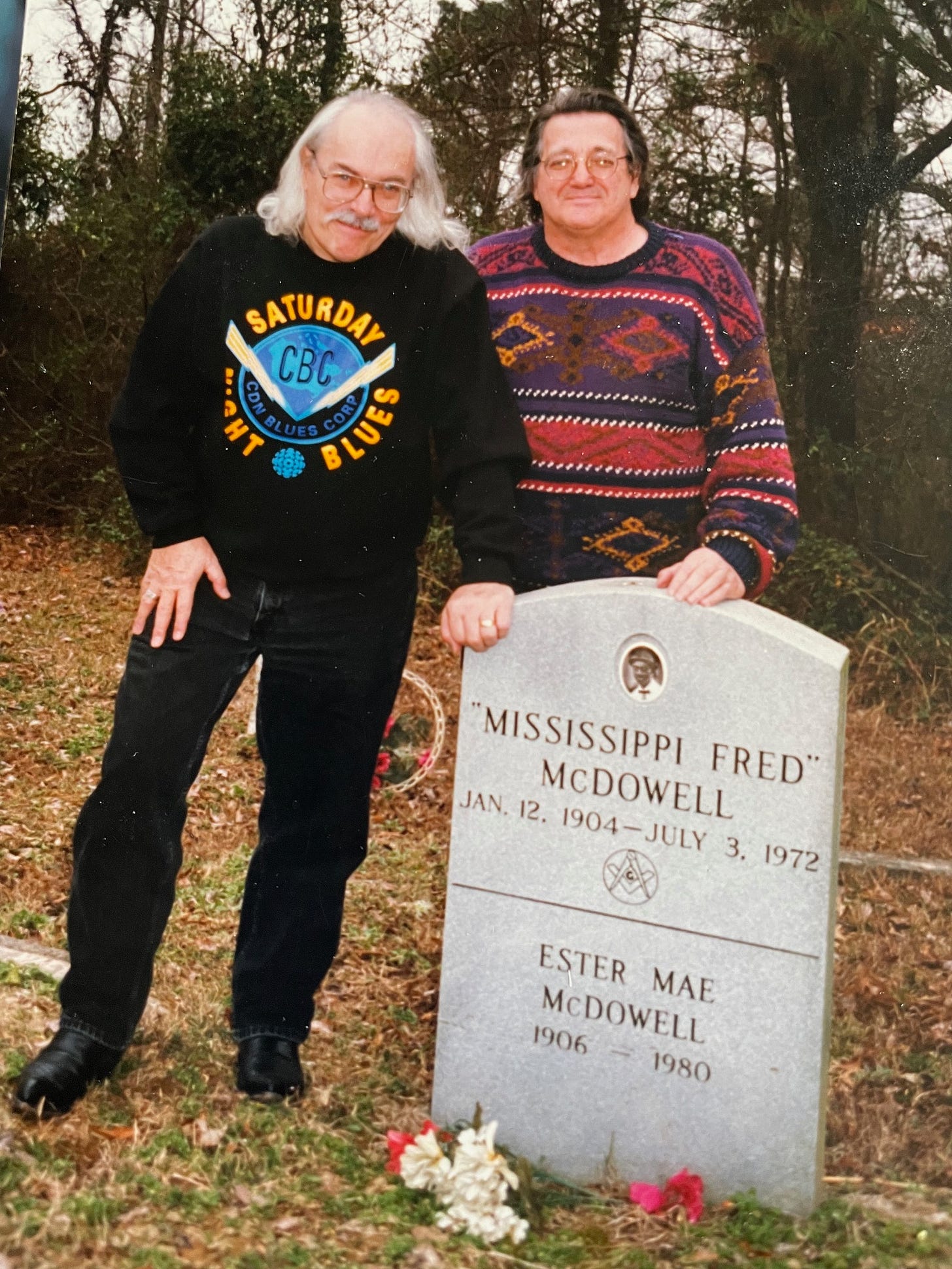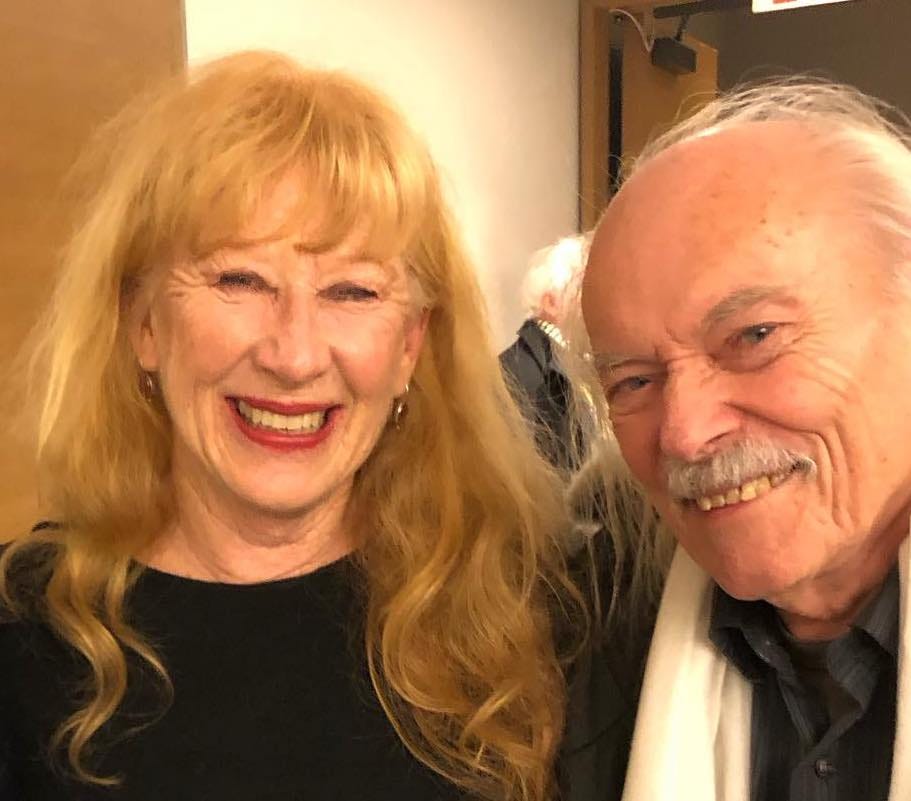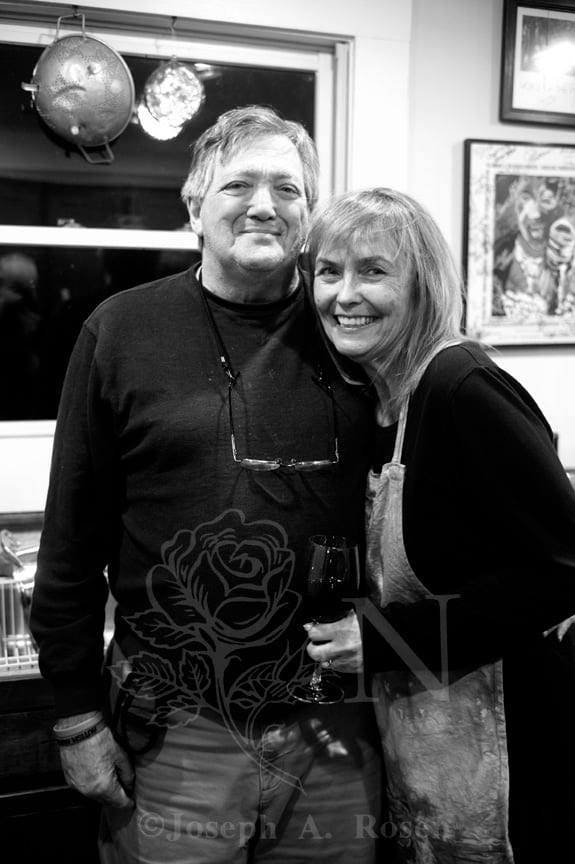#21 Stories from the Edge of Music: A backstage look at what music publicists do
… and a tribute to a pivotal figure in the world of the blues
Most of the articles I’ve written on Substack have been about musicians I’ve known or worked with — from Miles Davis to Nana Mouskouri, from Louis Armstrong to Ani DiFranco and k.d. lang. This time, though, I wanted to talk a little about how the music gets to you, how artists can become well known enough that you’ve heard of them, and hopefully heard or seen them in person.
For six months now, Richard Flohil has been publishing stories here, usually every week or 10 days. They’re the memories of a man who’s spent 60 years as a writer, publicist, club talent booker, concert promoter, festival organizer and serious music fan (he’s been to 14 live music shows so far this year).
This is a bit long and a bit late. But if you are an artist, this might be a refresher. If you know musicians, you might care to share this with them.
+++++++++++++++++++++++++++++++++++
BACKSTAGE: SPARE A THOUGHT FOR THE EARLY DAYS OF YOUR FAVOURITE ARTISTS
If you’re a subscriber to this Substack, you’re presumably a music fan, a listener, a supporter, or a concert goer. And what follows might give you an understanding of the hurdles artists — especially new ones — have to leap over.
There are parts of the music business that are hidden in relatively plain sight. As the musicians here know, major parts of the industry are based on a percentage of what they earn. If you’re signed with an agent, they earn between 10 and 15 per cent of every gig, and they take that money even if you get the gig yourself.
And if an artist has a manager, they’ll take an additional percentage of anywhere between 15 and 20 per cent. That’s not always been the case: Elvis Presley’s manager apparently took 50 per cent of the King’s income. Louis Armstrong’s manager had his artist on a weekly salary and kept the rest — and one of the greatest musicians in the history of jazz often played more than 200 gigs a year. (According to legend, when Armstrong acquired a mistress, he had to write a begging letter to his manager asking for a raise.)
When an artist is starting out, the biggest problem they have is building a team to help their career. They’re probably not earning enough to interest either a manager or an agent; the percentage of “not very much” is, obviously, even less. And certainly not enough to get a fully professional team on board.
There are three ways that an artist can deal with this hurdle. The first is that a brand new artist is so unique, so brilliant, so special, that an agent and/or a manager takes them on because their investment in time and money is going to pay off in the future. To be honest, this happens very rarely with artists who are not yet developed, but there are exceptions — the manager Larry Wanagas made a deal with Katherine Dawn Lang almost before she became k.d. lang.
The most commonplace scenario is that the artist does everything themselves. The artist has to book their own dates, handle their own publicity and promotion, find musicians to rehearse and perform with — and set their own career goals, which almost certainly include acquiring an agent and a manager. Oh, and write and perform as often as possible.
All this is a superhuman task and one that often defeats many promising artists almost before they’ve started.
+++++++++++++++++++++++++++++++++++++++++++++
The shining exception to this rule is Loreena McKennitt, and she’s never had a manager — she learned the business from the ground up and diligently put the lessons she learned into practice. Result: 14 million records sold (on her own label), world-wide tours to all four corners of the globe, not to mention the Order of Canada and dozens of other awards and honours. Another new record is on its way, and there’ll be another European tour this spring; she has hundreds of thousands of devoted supporters. And this is a woman who started her career busking outside the St. Lawrence Market in downtown Toronto.
++++++++++++++++++++++++++++++++++++++++++++++
A personal note about music publicity
The third avenue for a new artist to follow is to hire a music publicist; these folk charge a monthly fee rather than a percentage, and if a newcomer can find that money, a lot of the stress disappears. And just so you know, the monthly fee ranges from $400 up to $2,000.
I started to work as a publicist a long time ago, when I began to promote concerts in the early ’60s with blues artists I loved. I needed to tell people when and where the concerts were happening, who the (mainly unknown) artists were, and why people should spend their hard-earned money going to the shows I was presenting.
The fact that I had a media background as a newspaper reporter, a magazine editor and a freelance writer all helped. I’d learned who the right media people were and how to provide them with what they needed when they needed it — because so many publicists had tugged on my sleeves over the years, I knew which approaches worked and which ones didn’t.
When I decided to do music publicity full-time in 1966, I gravitated toward working with new artists in the early stages of their careers. Over the years, I was privileged to contribute in various ways to the success of the Downchild Blues Band, Serena Ryder, Loreena, k.d., Laura Smith, The Jerry Cans, Ani DiFranco, Jenie Thai, Andrea Ramolo and Crash Test Dummies. Later, I had opportunities to work with well-established artists such as Jeff Healey, Long John Baldry, Ian Tyson and many others.
Sometimes I was successful and sometimes I failed, occasionally very badly. (I will always apologize to Corb Lund and Matt Anderson; I disappointed two wonderful artists who nonetheless went on to enjoy considerable success.)
So, what can an artist expect from a publicist? Here’s a check list, in no particular order, of the first 10 tasks.
A talented young singer from Western Canada e-mailed me a while back. She asked “what would a full publicist/artist relationship entail?”
My answer: The duties/tasks/functions of a publicist would/could/sometimes should involve ALL, or MOST, or SOME of the following:
• Holding initial meetings to discuss the artist’s expectations, establish a rapport, and propose realistic possibilities. The publicist is hoping for a relationship, not a one-off one-night stand.
• Discovering the artist’s unique attributes, the back story, the “hook” that can catch attention from media people.
• Hand-holding (a.k.a. career guidance).
• Enjoying a mutual belief in other others’ talents/skills.
• Writing the artist’s bio. Sticking to facts, being informative and objective.
• Writing media releases — and coming up with stuff to write them about.
• Building a mailing list (e-mail, phone and addresses) of media individuals who might be interested in the artist.
• Creating a separate e-mail list of fans.
• Helping create a visual image for the artist.
• Choosing and working with designers, website builders and webmasters to build an online profile for the artist.
You’ll get 25 more possible tasks for your publicist listed in the 22nd issue of Stories from The Edge of Music next week…
+++++++++++++++++++++++++++++++++++++++++++++++++
DICK WATERMAN: THE MAN WHO SAVED THE LEGACY OF THE EARLY BLUESMEN
Dick Waterman died two weeks ago. You might not know his name, but he was a pivotal figure in the history of roots music. And he was a friend.
He helped rediscover the great Son House, who taught Robert Johnson before that pioneer bluesman met the Devil at the Crossroads outside of Clarksdale, Mississippi. Dick managed and booked Mr. House (as he always called him) and accompanied him to gigs all over the United States, Canada and Europe.
He also managed Mississippi John Hurt, Fred McDowell, Buddy Guy and Junior Wells, and for the first 15 years of her career, his then-girlfriend Bonnie Raitt. He worked tirelessly to reclaim the royalties for the old bluesmen whose songs had been claimed by the Rolling Stones and so many others.
He was a brilliant photographer and a fine writer — he started out as a sports journalist — and he was a generous, kind man. We’d met in 1965 when he brought Son House to the Mariposa Folk Festival; in the decades since, separated by the distance between Toronto and his endless travels and his home in Oxford, Mississippi, we saw each other maybe once every five years, but kept in touch by e-mail and phone.
And he was a friend for close to 60 years. He was a few months younger than I; in the early days of the internet, we were known on on-line blues sites as Richard the Younger and Richard the Elder.

Damn, I miss him, and if you’d known him, you’d be missing him too. But, thank the gods, there are personal stories to share with you…
There was an emotional time when Dick drove my friend Holger and I around Mississippi, stopping at the legendary Crossroads (there’s a gas station there now), Morgan Freeman’s blues club, the blues museum in Clarksdale and at Fred McDowell’s grave in the cemetery behind a small church in Como.
And there was a breakfast in Toronto with Son House, Dick and I. Mr. House, who was an alcoholic, could hardly hold his knife and fork; his manager gave him a small amount of bourbon and he recovered sufficiently to eat — and later that day earn an income that would support his wife and family back in Rochester, NY. Shortly after, Mr. House played his final show at a blues festival on Toronto Island. When it was over, Dick decided that his artist’s alcoholism was beyond control.
I recall a night in Montreal in the early ’80s when Dick, Bonnie, my friend Jean Davison and I were at a show with Buddy Guy and Junior Wells — all in our hippiest best with long hair, fringed leather and bell-bottom velvet pants.
Buddy was in overalls and Junior had a purple suit and a black fedora, and Bonnie was (as she still is) incredibly beautiful with her flaming red hair. The lot of us, at three in the morning, stumbled drunk/stoned into Ben’s Deli. Nobody took the slightest notice of any of us.
He was the best of the good people. He cared for his artists. He took the last of the great blues singers, made sure they were respected and well paid, and kept a great American musical tradition alive. Everyone in the blues world owes Dick Waterman; he’ll be missed and he’s not going to be forgotten.
+++++++++++++++++++++++++++++++++++++++++++++++++
QUOTE OF THE WEEK
“The world is divided between the day people and the night people. And the job of the night people is to take the money from the day people… and the night people mind their own business.” — Dick Waterman
+++++++++++++++++++++++++++++++++++++++++++++++++
NEXT TIME IN STORIES FROM THE EDGE OF MUSIC
RUSH on the road — look out for a flashback story from 1975. And there’ll be 25 more things a publicist should be able and ready to do for a new artist. Oh, and a movie recommendation, and an advance notice about a wonderful new artist you should discover.
Thanks for reading Stories from the Edge of Music. A really good way to support this writer is by upgrading to a PAID SUBSCRIPTION; It’ll cost you $6 a month, just a bit more than two cups of Tim Hortons coffee — and much more nourishing.






Nice tribute to Dick Waterman! I hope Cinda gets to see it.